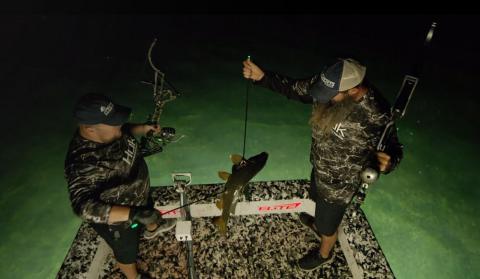Todd Amenrud | Originally published in GameKeepers: Farming for Wildlife Magazine. To subscribe, click here.
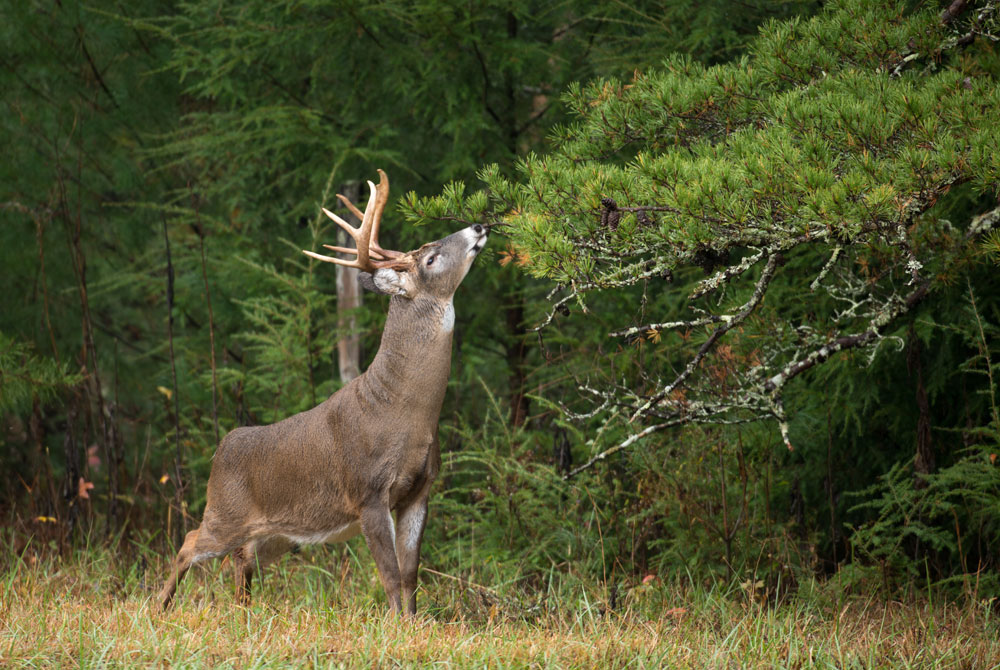
Many land managers implement food plot programs and timber stand improvement. They also practice sound herd management and have everything whitetails could ever need, yet they still find it difficult to harvest mature bucks. They put in their time, hunting countless hours in pursuit of a “home-grown” trophy. Since they can’t seem to connect, their mind ponders copious reasons why. Unwittingly these hunters are often the cause of their own demise. A mature buck will not tolerate much of an intrusion before it changes something to avoid making contact with you. These animals often figure out your movements and habits before you ever see them. Most hunters also tend to go hunting whenever they have an opportunity, whether the circumstances are in their favor or not. You can’t divulge your intent and blow the deal before you have an opportunity. Why let them know you’re coming?
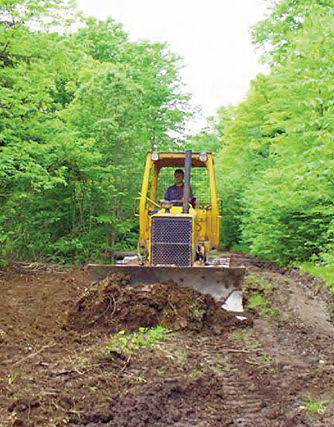
during legal hunting time, creating smaller plots
closer to the sanctuaries may help. Obviously the
closer you get to where they’re bedding, the
better chance for a shot during legal hunting light.
In timbered areas, a dozer may be required.
Extraordinary Anxiety for Whitetails
“I got the day off work! I’m heading to the tree stand!” So many hunters never even consider the wind direction, whether the thermal is in their favor, if they can approach their ambush location without being busted, and a dozen other details that will ultimately factor into their success. They hunt because they have the opportunity to hunt. The problem being, their target buck (or other deer for that matter) will often pattern this hunter before he ever sees the animal. It’s best to only hunt when the conditions are in your favor, or at least wait until the majority of the details back your success – hardly ever will all the circumstances be in your favor, but you must at least make sure the air current (wind and thermal) is supporting your ambush location and approach.
I know how you feel; we only get so many days to hunt each season so we want to make the most of each opportunity. However, by making mistakes and hunting when the list of details favors the animals, we teach our quarry how to avoid us. Rather than just going hunting because I have the time off work and my “daddy-duties,” if the conditions aren’t right I use that time to practice shooting, set up another ambush location somewhere else, scout a new location, deal with my camera traps, prepare other equipment, glass a food plot or ag field, search for new properties to hunt and numerous other duties that I believe are also “part of the hunt.” This way prime ambush locations aren’t wasted “just because” and your likelihood of harvesting the buck you’re after still exists.
Getting there is Half the Battle
Oftentimes your scheme is blown before you ever reach your stand site. Getting there undetected is just as important as hunting during the right conditions. There are numerous deceptions we can use to help us make it to our stands undetected—from preparing silent approach trails or planting screening cover, to mixing up our access routes or having a buddy drive you to and pick you up from the site, we just don't want the animals to know they’re being hunted.
I often prepare silent approaches to my ambush locations before the season by snipping branches, raking leaves and other debris off the trail or even cutting a path through tall grass with a weed-whacker. Ideally, you should be able to access your tree stand and have deer bedded within 100 yards that haven’t noticed you.
A great tactic that I’m doing much more of these days is planting a screening cover to hide my approach. Strips of corn, millet or some sorghum will work, but BioLogic’s Blind Spot is perfect for this. The Egyptian wheat in this blend can grow 12 to 14 feet high. It will grow a thick stand that even with only a 10-foot-wide strip it is difficult to impossible to see through. This tactic works great for screening open spots you must cross, stand sites or ground blind locations, parking areas or any place you want to remain secluded.
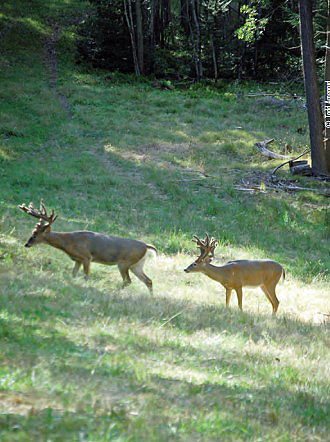
property you must give them a spot where they
can live undisturbed. Contact with humans will
force them into doing something different to
steer clear, and can cause them to completely
change secure areas (bedding areas).
When you enter your hunting area, do you drive into the property the same way every time? I learned many years ago while hunting Manitoba farmland with its “section roads” that oftentimes bucks simply see you coming and your hunt is blown before you ever get out of your vehicle. I’ve watched bucks from my tree stand do this with other hunters—“here comes Billy-Bob on his way to his tree stand again” so they skedaddle out of the area or stay bedded until after dark to sidestep the contact. In the Manitoba situation, the section roads were the only way to access the property via land, so once I figured this out I used a small Jon Boat and trolling motor to travel up the Red River so I could come in from the back-side of the property. I believe two whopper bucks were the results of employing this tactic.
Using the buddy-system is another way to fool your herd on approach. Whitetails become accustomed to farm vehicles and ATVs. In fact, I’m sure most of you have driven by a bedded whitetail and watched them hunker-down and stay hidden. Try going by them on foot and see if they stay bedded—they’ll be onto your neighbor’s property before they begin to slow down. A vehicle is much less intrusive than a human on foot. With this scheme, you simply have a partner drive you to your tree stand and then leave with the vehicle. The deer believe the danger is gone with the vehicle. Obviously, you want your friend to pick you up at the site when the hunt is over. This can be especially effective when hunting a food plot, agricultural field or bait site where there will likely be deer present when the hunt is over and you need to go. The last thing you want to do is identify your ambush location as a spot associated with “humans” and “danger.”
Constructing A Safe Haven for Mature Deer
If you wish to “house” mature bucks in your area you MUST give them a spot where they are left alone. If during the hunting season you’re making scouting trips through the parcel to find a new rub on a tree you didn’t find on your last scouting trip three days ago…sorry, but you will not hold mature bucks in that area. Giving them a secure sanctuary is important, not only if you wish mature bucks to reside in the area, but also if you want the herd to move freely and willingly during daylight hours. Pressure will only condition your herd into moving more during the night, before and after legal hunting time.
Contact with humans will force them into doing something different to steer clear, and can cause them to completely change secure areas (bedding areas). They will probably still be somewhere within the region they’ve claimed as their home range, but they will search out spots where they are left alone and now they’re going to be MUCH more difficult to hunt! Whitetails, especially mature bucks, know when they’re being hunted.
How much area do you need for a sanctuary? Typically the size of the sanctuary(ies) would depend upon the total size of the property. Larger properties will normally have larger sanctuaries. Five to ten acres is large enough to hold a mature buck, but in my view, the more the better. Sanctuaries tend to be thick cover and normally towards the center of a property, but again, any sanctuary is a good one. My 500-acre Ontario property has about 400 acres of sanctuary. These are areas that are managed, but only gone into when work is needed or to check cameras. We do make exceptions to the rules, but rarely are these sanctuaries hunted. Again, the idea is to let the animals go about their daily routine undisturbed and unaware they’re being hunted.
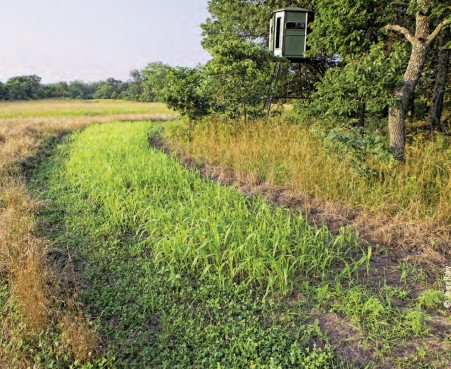
getting out of your hunting area “clean.” Here you can see how
BioLogic Blind Spot is planted around the stand site to screen
movement once it matures.
During the hunting season, my home property in Minnesota is treated entirely as a sanctuary. Rather than designating certain areas as sanctuaries, we delegate the entire property. I’ve heard it referred to as a “minimum impact hunting style.” For the most part, we have our ambush locations set in advance of the season and we only move in to strike when the conditions are in our favor. But get this…in giving the herd a spot they can rely upon for safety, our deer density will approximately triple from September through January. When our neighbors are hunting whenever they have the chance regardless of whether the conditions are correct, riding horses and ATVs, hunting squirrels and numerous other activities, our property serves as a “safety zone” and populations build because of it. Because this has been learned by generations of whitetails, it just keeps getting better and better. That draw is also magnified because we back up the sanctuary by having a palatable food source for them all the time.
Creating Pressure on Purpose
With all of the information above preaching the positive for not pressuring your whitetails or your hunting area, sometimes you may need to use force to get a mature buck up and moving during legal hunting hours. I would much rather hunt a buck that is undisturbed and moving about naturally within his home, but sometimes pressure is necessary to get an opportunity for a shot. Sometimes as a “last hurrah,” in a situation where they have been pressured too much, or in areas that are difficult to hunt from a traditional tree stand or ground blind, a little pressure can be just the ticket.
Anytime you enter your hunting area and bump deer, pay close attention to their escape routes. Keep a journal, because they’ve escaped that way before, chances are if the conditions are remotely the same they’ll use the same route again. It’s possible to set up on these routes, spook the animals again, but now intercept them. Obviously we don’t want the animals running full speed past the hunters, so I would suggest a drive strategy I’ve heard referred to as a “still-hunt push.” You just want the buck up and moving slowly to the hunter, looking back over his shoulder. So be sneaky and use the wind to your advantage.
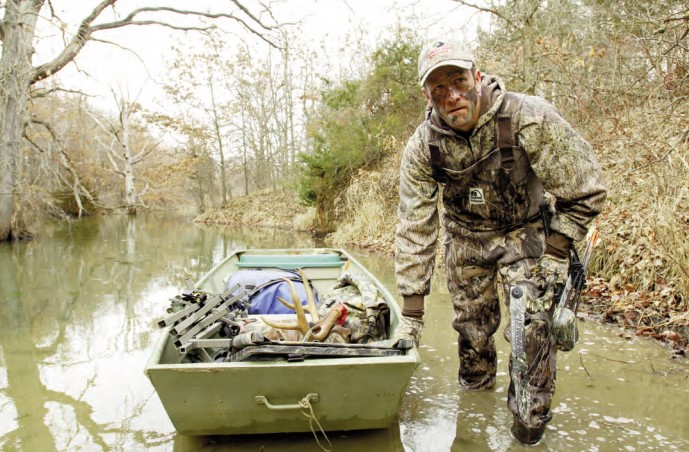
To sum up, pressured whitetails are difficult to hunt unless the pressure is targeted and on purpose. Don’t hunt when the conditions aren’t in your favor. Give them a spot where they can live undisturbed. Animals free from anxiety are much easier to hunt than bucks that know they’re being pursued. Be sneaky, cover your approach and ambush your buck while he’s going about his daily routine undisturbed. Lack of pressure is a key in consistently killing mature bucks.















